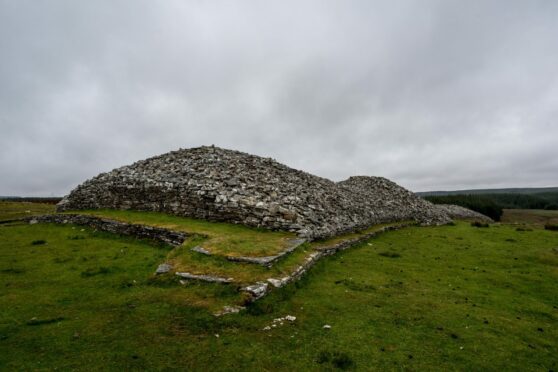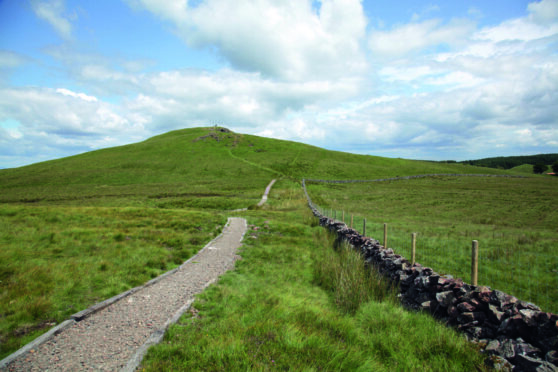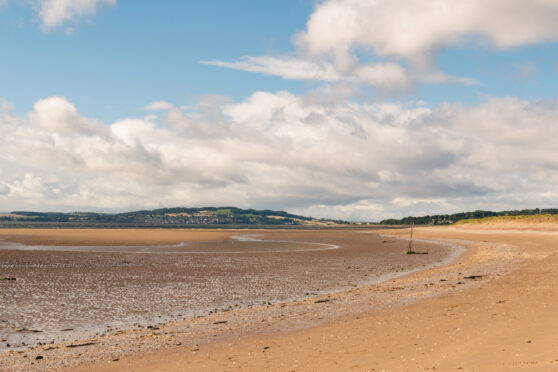
In the heart of the vast peatland Flow Country of Caithness lie the Grey Cairns of Camster. The two 5,000-year-old tombs near Lybster, known as Camster Long and Camster Round, offer some of the earliest records of life in the area.
Today the cairns are preserved by Historic Environment Scotland (HES) and are open for the public to explore. Visitors can even crawl inside the remarkable tombs.
Camster Long is the more complicated of the two, and its original purpose is still not fully understood. Narrower than the other, Camster Long houses a number of chambers with a rounded-end façade.
Camster Round, meanwhile, is a large building with a middle chamber, and has three smaller sections to discover from there. The main chamber is large enough to stand upright, but the narrow and low entrance passage requires visitors to crawl. First excavated in the 1800s, the tombs were found to house remains of humans and animals, tools and, perhaps most interestingly, Neolithic pottery.
Rachel Pickering is senior cultural resources adviser at HES. She says: “The Grey Cairns of Camster are two of the best preserved chambered cairns in Britain. They’ve been carefully excavated and consolidated so today visitors can safely explore the burial chambers.
“Crawling through the passage and into the chamber provides an incredible sense of our Neolithic past and the skills of those who built these impressive monuments.”
You can easily see the cairns from the road as you drive up, and a short wooden boarded path leads from the roadside parking to the site.
The cairns offer an insight into both life and death in Scotland many centuries ago. It is a fantastic way to step back in time and see pre-history first hand, as you try to imagine what the landscape was like all those centuries ago.
“Though the cairns may at first appear lonely and isolated in today’s landscape, the surrounding area is rich in archaeological remains and visitors can discover further examples of fascinating prehistoric sites nearby,” Rachel says.
These include Cairn O’ Get, another 5,000-year-old tomb nine miles from the Grey Cairns of Camster, and Hill O’ Many Stanes, a hillside with about 200 stones erected. This strange sight is definitely worth a visit. Dating back 4,000 years, the hill is unlike anywhere else in the UK and is only seven miles from the Grey Cairns of Camster. Visiting all of these sites in one day is the perfect heritage tour of the area.
The Grey Cairns of Camster is the ideal place for a family trip, to enjoy the outdoors in stunning scenery as well as time travelling back to a fascinating period in Scotland’s past.
When
All year round
How much
Free
Where
Five miles north of Lybster on the A99. Monument is down an unclassified road. Parking available.
Contact
0131 668 8600
www.historicenvironment.scot

Enjoy the convenience of having The Sunday Post delivered as a digital ePaper straight to your smartphone, tablet or computer.
Subscribe for only £5.49 a month and enjoy all the benefits of the printed paper as a digital replica.
Subscribe





